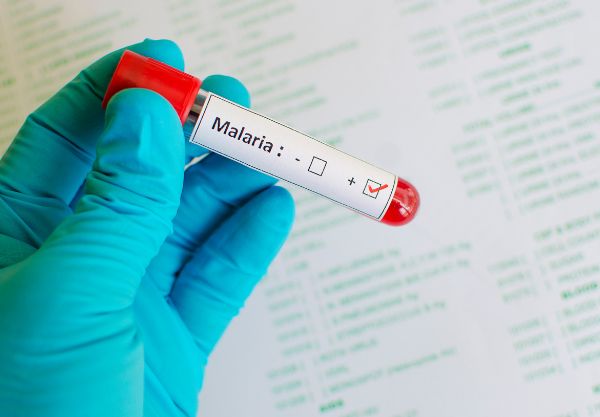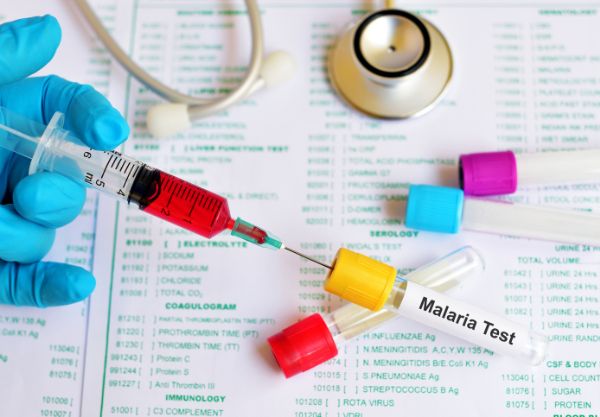Table of Contents
The Dominican Republic, known for its vibrant culture, beautiful beaches and tropical climate, attracts millions of tourists every year. However, while it offers a paradise for vacationers, the region also carries the risk of malaria, particularly during the tourist season, when visitors are more likely to visit rural or forested areas where malaria-carrying mosquitoes thrive. As a result, using Malaria Test Kits becomes an essential part of travel preparation for those visiting the country. This guide outlines the process of using Malaria P.f/Pan Rapid Tests and other diagnostic tools to monitor and prevent malaria during your stay in the Dominican Republic.

Step 1: Understanding Malaria Risk in the Dominican Republic
Malaria transmission in the Dominican Republic is concentrated in rural areas, especially in the border regions and regions with dense forests. Major tourist destinations like Punta Cana and Santo Domingo are generally considered lower-risk areas, but travelers venturing into rural or less developed parts of the country should be aware of the potential risks.
Malaria transmission is more prevalent during the rainy season, which runs from May to November. This period sees an increase in mosquito breeding, making it critical for tourists visiting the Dominican Republic during these months to stay vigilant about mosquito bites and be prepared to test for malaria if they develop symptoms.
Step 2: Recognizing Malaria Symptoms in Dominican Republic
Malaria may not always present immediate symptoms and they can appear several days or even weeks after infection. It’s important for tourists to recognize the common symptoms of malaria, especially if they are visiting high-risk areas in the Dominican Republic. These symptoms include:
- Fever: High fever is the most common symptom, often followed by chills.
- Headache: A severe headache may occur, often accompanying the fever.
- Muscle and Joint Pain: Body aches and fatigue are common.
- Nausea and Vomiting: Some individuals may experience gastrointestinal symptoms.
- Sweats and Fatigue: After fever spikes, profuse sweating and exhaustion are common.
- Painful breathing or shortness of breath: In severe cases, respiratory problems may develop.

If any of these symptoms appear, especially after visiting rural areas, it’s essential to test for malaria promptly using a Malaria Rapid Test Kit to rule out infection.
Step 3: Why Malaria Testing is Essential for Tourists?
Testing for malaria during the tourist season in the Dominican Republic is critical for early diagnosis and effective treatment. Malaria, if untreated, can lead to serious complications, including organ failure or death. Here’s why Malaria Test Kits are so important:
- Early Detection: The sooner malaria is detected, the easier it is to treat. Delayed treatment can lead to severe illness or even fatality, especially if the infection progresses to Plasmodium falciparum.
- Prevention of Spread: Early testing and treatment prevent the spread of malaria to others. Malaria is transmitted through mosquito bites, so individuals infected with malaria can infect mosquitoes, which can then spread the disease to others.
- Self-Testing Convenience: Malaria Home Test Kits allow tourists to test quickly and discreetly without needing to visit a medical facility immediately. This is particularly useful for tourists in remote areas or those unfamiliar with local healthcare resources.
Step 4: Using Malaria Test Kits During Your Stay in Dominican Republic
Knowing how to properly use a Malaria Rapid Test Kit during your stay in the Dominican Republic is essential. If you experience symptoms after visiting malaria-risk areas, it is crucial to act quickly. Here’s a step-by-step guide to using Malaria Test Kits for effective self-testing:
Step 4.1: Prepare Your Malaria Test Kit

Before using any Malaria Antigen Test Kit, ensure you have all the necessary items from the kit:
- Test device (e.g., a test strip or cassette)
- Lancet for collecting a blood sample
- Alcohol swab for cleaning the test site
- Buffer solution (if applicable)
- Instructions for use
It is essential to read the instructions thoroughly before beginning the test.
Step 4.2: Collect a Sample
- Choose the Test Area: Most malaria tests require a blood sample, typically taken from the fingertip using a lancet. Select an area on your fingertip that is clean and free of injury.
- Clean the Area: Use the alcohol swab to clean the fingertip thoroughly. This reduces the risk of contamination.
- Prick the Finger: Use the lancet to prick your fingertip and gently squeeze to obtain a small blood sample.
Step 4.3: Apply the Sample to the Test Device
- Place the Blood Sample: Depending on the Malaria Rapid Diagnostic Kit you’re using, place a drop of blood onto the designated area on the test device, such as a test strip or cassette. If the kit requires additional reagents, such as a buffer solution, apply them as instructed.
- Wait for the Reaction: After applying the sample, wait the recommended time, usually 15-20 minutes, for the results to appear.
Step 4.4: Read the Results
- Interpret the Test: After the recommended wait time, check the test device for results. Typically, a Malaria P.f Rapid Test will show two lines if the test is positive and one line if the test is negative.
- Seek Medical Consultation: If the test is positive or if symptoms persist, even with a negative test, seek medical advice immediately. A healthcare professional can provide further diagnosis and treatment.
Step 5: What to Do If You Test Positive for Malaria?
If the Malaria Test Kit indicates a positive result, it’s crucial to seek immediate medical treatment. Malaria is treated with antimalarial medications, which should be prescribed by a healthcare provider. Here’s what to do if you test positive:
- Visit a Local Health Facility: The Dominican Republic has many health clinics and hospitals that cater to tourists. It’s important to confirm the diagnosis with a healthcare provider and begin treatment as soon as possible.
- Start Treatment Immediately: Malaria is treated effectively with the right medication. Follow the healthcare provider’s instructions carefully and complete the full course of treatment.
- Notify Your Travel Insurance Provider: If you have travel insurance, notify them about your diagnosis and treatment, as malaria may require medical evacuation or further health-related assistance, especially if you’re in a remote area.
Step 6: Preventing Malaria During Your Stay in Dominican Republic
While testing is important for detecting and treating malaria, prevention is the most effective way to protect yourself from the disease. Here are some steps to reduce the risk of malaria while traveling in the Dominican Republic:
- Use Mosquito Repellent: Apply insect repellent with DEET to exposed skin regularly, especially in the evenings when mosquitoes are most active.
- Wear Protective Clothing: Long sleeves, pants and socks can help reduce your exposure to mosquitoes, especially in rural areas.
- Sleep Under Mosquito Nets: In malaria-risk areas, sleep under an insecticide-treated mosquito net to protect yourself while resting.
- Take Malaria Prophylaxis: If recommended by a healthcare provider, take antimalarial medication before, during and after your trip to prevent infection.

Conclusion
Using Malaria Test Kits during the tourist season in the Dominican Republic is a proactive step for ensuring your health and safety. With the risk of malaria still present in rural and tropical areas, especially during the rainy season, tourists should be aware of the symptoms and the importance of early detection. Using Jal Medical, as a leading malaria rapid diagnostic test kit exporters and suppliers following preventive measures, you can enjoy your trip without the fear of contracting malaria. Stay informed, test early and seek medical treatment if needed to ensure a healthy and enjoyable visit to the Dominican Republic.
FAQs
How accurate are Malaria Rapid Test Kits?
Malaria Rapid Test Kits are highly accurate when used correctly, providing reliable results within 15-20 minutes. However, for a definitive diagnosis, especially in cases of low parasite density, further testing may be required.
Can I test for malaria at home?
Yes, Malaria Home Test Kits are available and allow you to test yourself at home. However, if you test positive, it’s important to visit a healthcare provider for confirmation and treatment.
What should I do if I test positive for malaria in the Dominican Republic?
If you test positive for malaria, seek immediate medical care at a local healthcare facility to begin treatment with antimalarial medications.
How long after symptoms appear should I test for malaria?
You can test for malaria as soon as symptoms appear, particularly if you have been in rural or forested areas where malaria is more prevalent. Testing should be done promptly for early diagnosis.
Are Malaria Test Kits available in the Dominican Republic?
Yes, Malaria Rapid Diagnostic Kits and other malaria testing tools are available in pharmacies and healthcare centers in the Dominican Republic, particularly in areas frequented by tourists.






